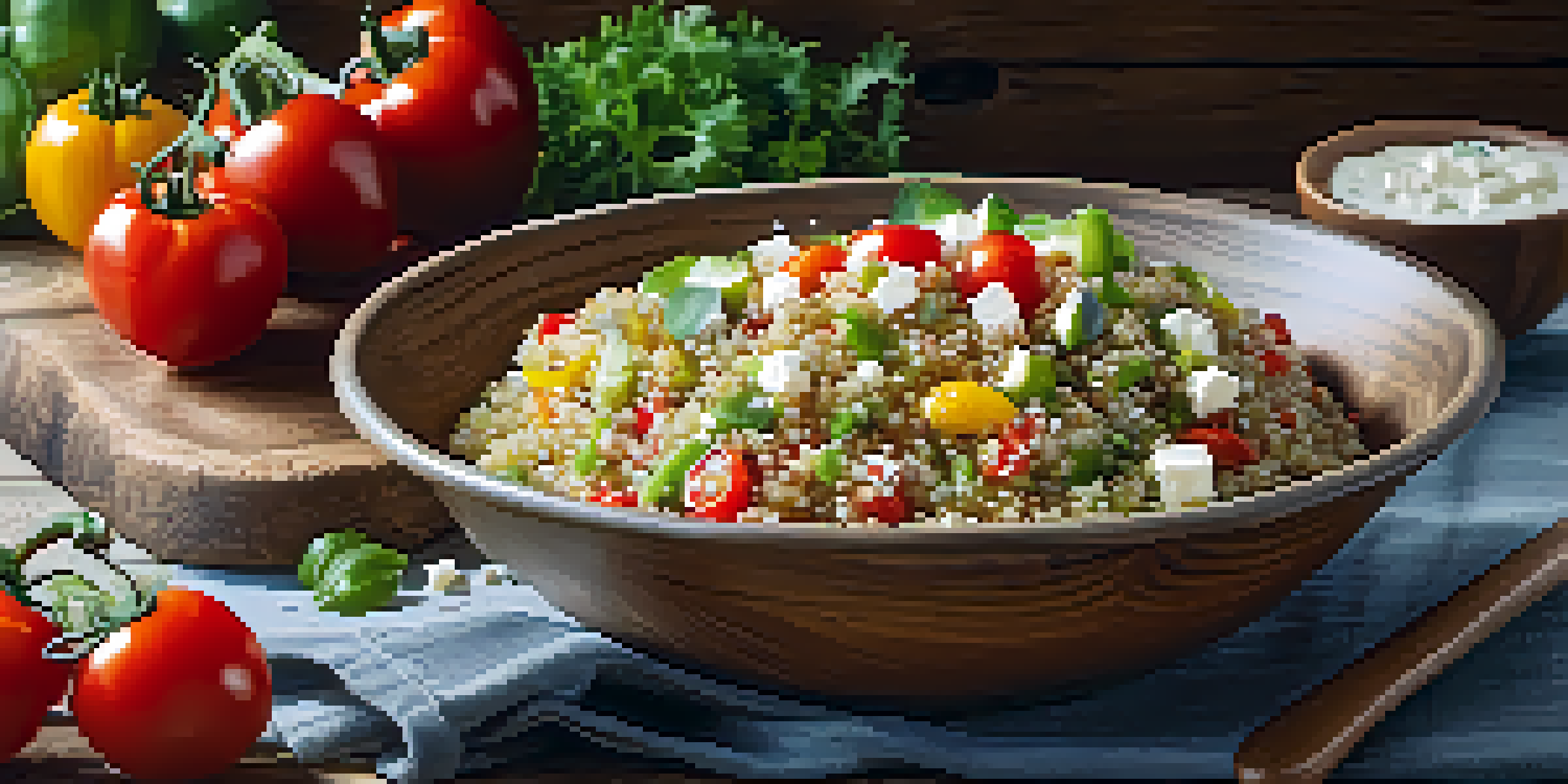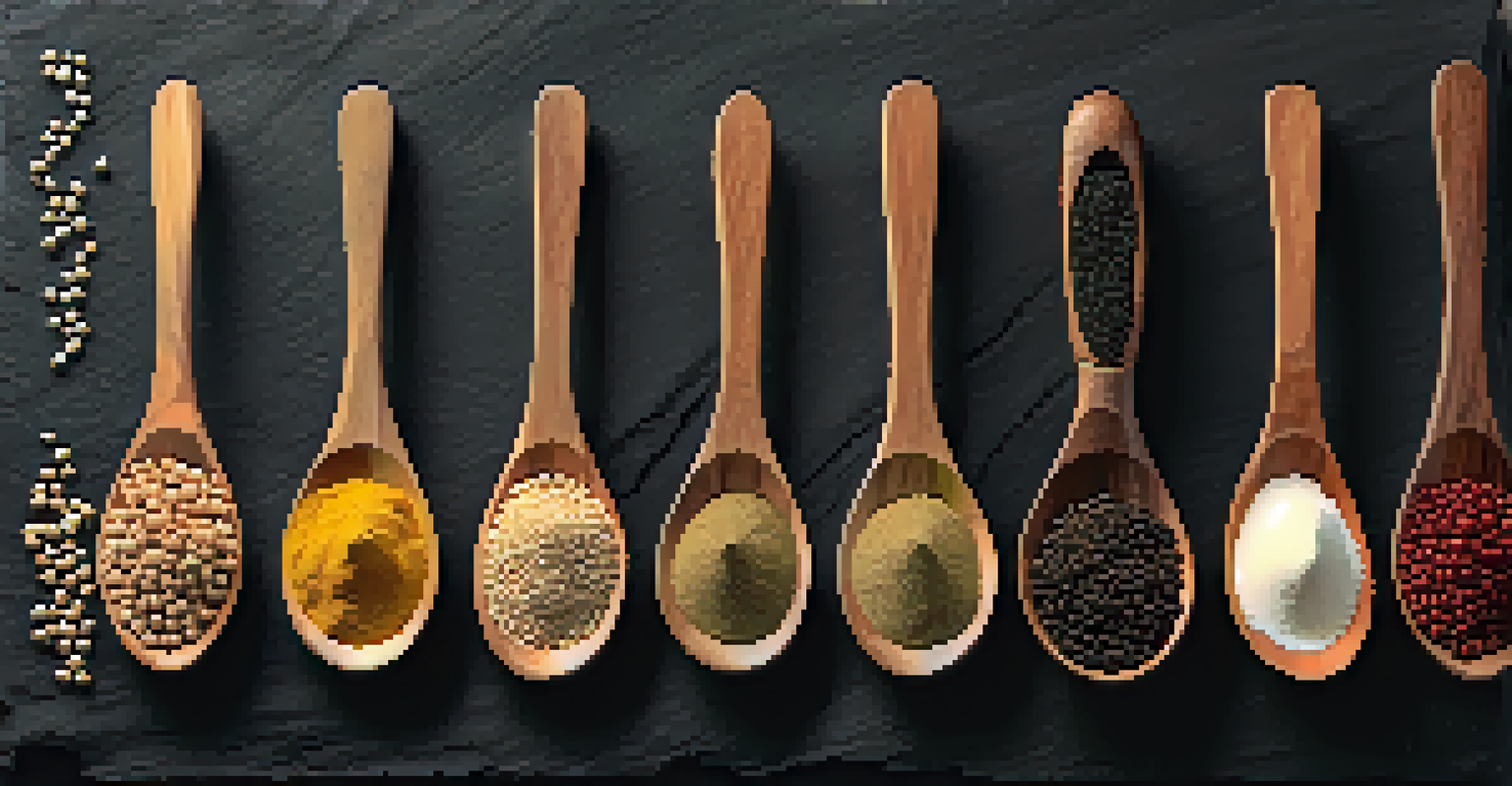Peruvian Superfoods: Their Global Acceptance and Use

What Are Peruvian Superfoods and Why They Matter
Peruvian superfoods are nutrient-dense foods native to Peru, celebrated for their health benefits. These foods, such as quinoa, maca, and camu camu, are packed with vitamins, minerals, and antioxidants. Their rich nutritional profiles have made them popular not just in Peru, but around the globe.
Let food be thy medicine and medicine be thy food.
The unique growing conditions in the Andes and Amazon contribute to the exceptional quality of these foods. For instance, quinoa, often referred to as a 'super grain', is gluten-free and high in protein, making it a staple for many health-conscious eaters. This nutritional richness is one reason why these superfoods have gained global traction.
As more people become aware of the importance of nutrition, the demand for these superfoods continues to rise. Health enthusiasts and chefs alike are incorporating them into various dishes, making Peruvian superfoods a trendy addition to diets worldwide.
The Nutritional Powerhouses: Key Peruvian Superfoods
Some of the most notable Peruvian superfoods include quinoa, maca, and açaí berries. Quinoa stands out for its complete protein profile, which is essential for muscle repair and growth. Maca, a root vegetable, is known for its energy-boosting properties and is often used in smoothies and energy bars.

Camu camu, another rising star, contains one of the highest concentrations of vitamin C found in nature. This tropical fruit is often used in supplements and health drinks, attracting attention for its immune-boosting benefits. Each of these superfoods brings unique flavors and health benefits, making them versatile ingredients in countless recipes.
Peruvian Superfoods Enhance Health
These nutrient-dense foods like quinoa and maca offer impressive health benefits and are gaining global popularity.
Additionally, these superfoods often come with cultural significance and traditional uses that enhance their appeal. For instance, maca has been used in Peruvian culture for centuries to improve stamina and libido, which adds a layer of historical context to its modern popularity.
Global Trends: The Rise of Peruvian Superfoods
In recent years, there has been a noticeable trend towards incorporating Peruvian superfoods into diets around the world. This shift is largely driven by the growing interest in plant-based and health-conscious eating. Social media and food blogs have played a significant role in showcasing these foods and their benefits, making them more accessible to a wider audience.
The food you eat can either be the safest and most powerful form of medicine or the slowest form of poison.
Moreover, as consumers become more educated about nutrition, they seek out foods that offer functional benefits. The high antioxidant content and anti-inflammatory properties of superfoods like açaí and camu camu are appealing to health enthusiasts. This has led to an increase in the availability of these foods in health stores and restaurants globally.
The culinary world is embracing these ingredients too, with chefs creating innovative dishes that highlight the unique flavors of Peruvian superfoods. From quinoa salads to maca smoothies, these foods are now staples in many kitchens beyond Peru, further solidifying their global presence.
Challenges Facing Peruvian Superfoods in the Market
Despite their rising popularity, Peruvian superfoods face several challenges in the global market. One major issue is the sustainability of sourcing these foods. As demand increases, there is a risk that overharvesting could jeopardize the ecosystems where these superfoods are grown, particularly in the Andes.
Additionally, the lack of standardized quality control can lead to inconsistencies in the product, which may deter some consumers. It's crucial for producers to establish good practices to ensure that they meet both local and international standards. This is essential not only for consumer trust but also for the long-term viability of these products.
Sustainability Challenges Persist
The rising demand for Peruvian superfoods raises concerns about sustainability and quality control in sourcing.
Lastly, the pricing of these superfoods can be a barrier. While many are willing to pay a premium for health benefits, affordability remains a concern for some consumers. Addressing these challenges will be key to maintaining and growing the global market for Peruvian superfoods.
Culinary Uses of Peruvian Superfoods: A Delicious Adventure
One of the most exciting aspects of Peruvian superfoods is their versatility in the kitchen. Quinoa can be used as a base for salads, soups, or even as a breakfast porridge, making it a delightful and nutritious option at any meal. Maca powder can easily be added to smoothies, baked goods, or energy bars for an extra boost.
Camu camu, often found in powdered form, is a fantastic addition to smoothies or yogurt, providing a tangy flavor along with a vitamin C punch. The ability to incorporate these superfoods into everyday meals allows for creative culinary exploration while reaping their health benefits. This makes them not only nutritious but also enjoyable.
Moreover, many chefs are experimenting with these ingredients in traditional recipes, fusing Peruvian culture with modern culinary techniques. This blending of old and new not only showcases the rich heritage of Peru but also introduces these superfoods to a broader audience.
The Future of Peruvian Superfoods on the Global Stage
Looking ahead, the future of Peruvian superfoods appears bright as they gain recognition in the global health food market. With increasing awareness of the benefits they offer, consumers are more likely to seek out these nutrient-rich foods. As a result, producers are looking for innovative ways to sustainably cultivate and market these superfoods.
Additionally, collaborations between Peruvian farmers and international businesses could enhance the accessibility of these products. By promoting fair trade practices, both parties can benefit while ensuring that local communities thrive. This approach not only supports the economy but also preserves the cultural significance of these superfoods.
Culinary Versatility of Superfoods
Peruvian superfoods can be creatively incorporated into a variety of dishes, enriching meals while providing health benefits.
As the trend towards health-conscious eating continues, Peruvian superfoods are well-positioned to play a significant role in global diets. With ongoing education and marketing efforts, these foods will likely become staples in kitchens around the world, celebrated for their flavor and health benefits.
Conclusion: Embracing the Nutritional Benefits of Peru
In conclusion, Peruvian superfoods are not just a passing trend; they represent a significant shift towards healthier eating. Their unique flavors, coupled with impressive nutritional profiles, make them valuable additions to any diet. As global interest continues to grow, it's essential to support sustainable practices that ensure these foods are available for generations to come.
By embracing these superfoods, consumers can improve their health while also celebrating the rich culture of Peru. The stories behind these foods, along with their benefits, create a deeper connection that enhances the eating experience. It's a win-win for both health and cultural appreciation.

As we look to the future, incorporating Peruvian superfoods into our diets could lead to a healthier world, one meal at a time. So why not take the plunge and explore the delicious possibilities that these superfoods have to offer?